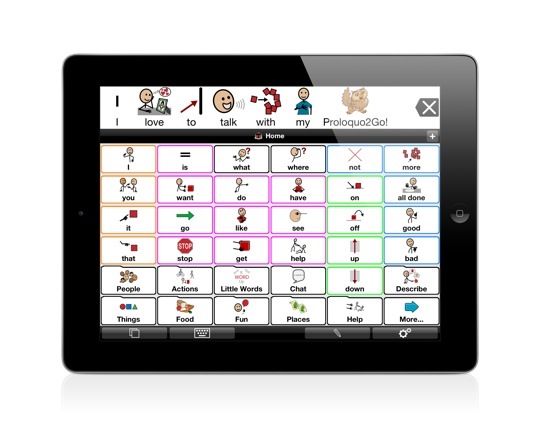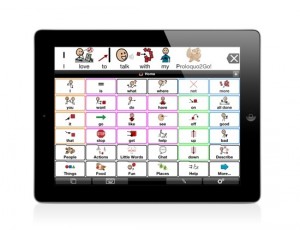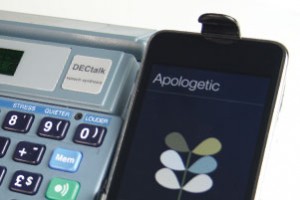
Prololoquo2Go gives voice to those who cannot speak. The technology is the product of AssistiveWare, a company founded in 2000 that provides assistive technology software to address physical, vision, communication and reading impairment problems. Screen and application reading software has been around for several decades. These applications have always sounded artificial and have been limited to adult voices. But not anymore. For the first time children who use such technologies can sound like children and communicate in near real-time.
To see this software in action visit the AssistiveWare YouTube channel. You’ll be amazed at how effective this technology is for children.
Proloquo2Go works on iPad, iPhone and iPod touch technology from Apple. It uses a symbolic touch keyboard that includes icons that can be strung together with letters and numbers to form complete sentences. See the image below on an iPad tablet to get a sense of what the communication interface is all about.

Users can speak with a boy or girl voice. For users in the U.K. they even come with appropriate British accents.
The evolution in the quality of how speech synthesis technology sounds is largely the result of the increasing speed of today’s computer processors and the low cost of memory for computing devices. The portability of computing technology with mobile devices makes it possible for text-to-speech to be carried by a user with a disability. In the past applications like this were only available on desktop or laptop computers.
Proloquo2Go allows for conversational interaction. The voices sound very real although there is no emotional content in the conversation, so it still sounds somewhat artificial. But even that challenge is being taken up by application developers.
Speech Hedge is a pilot project attempting to create a conversational text-to-speech interface with sixteen different tones of voice that reflect mood. Watch a video at this site to get a sense of what is involved in developing emotion in synthetic speech. The technology is being developed to work with the Apples iPhone, iPod and iPad.









